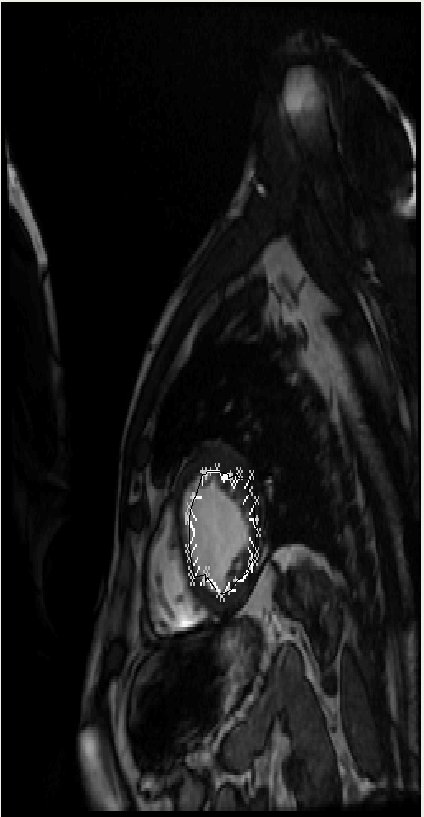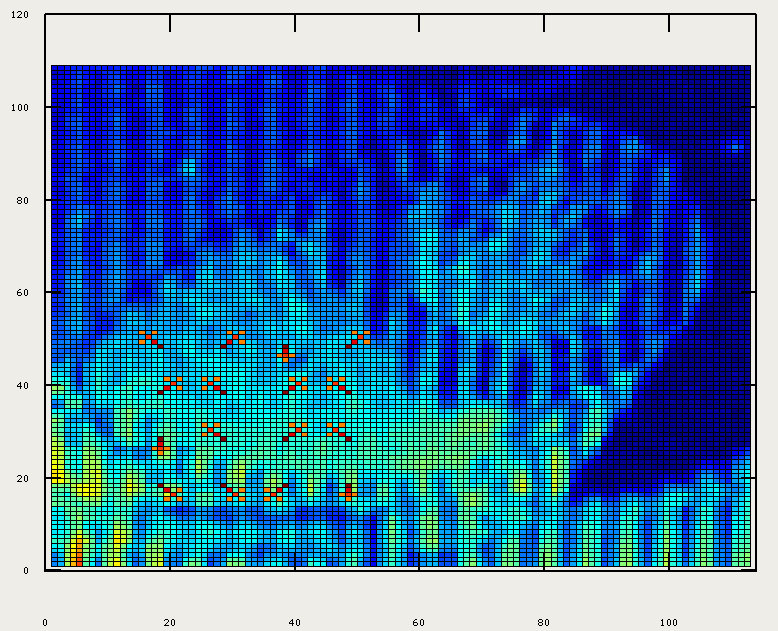 PDF version of this entire document
PDF version of this entire document
The existing algorithm, whose corresponding code is available as free/libre software, uses a simple method to estimate best direction for a set of landmark points to move in. It calculates the shuffle distance within a given window size and then moves any given point in that direction, gradually finding better templates. Initial placement of points can be arranged in a circle and then refined by edge detection or it can be put in a rectangular grid, also with optional rearrangement based on nearby edges. Once all the initial points are in place (loosely connected) the algorithm proceeds frame by frame, modifying the location of points and visualising them while taking stock of directions of movement.

|

|
Roy Schestowitz 2010-12-25